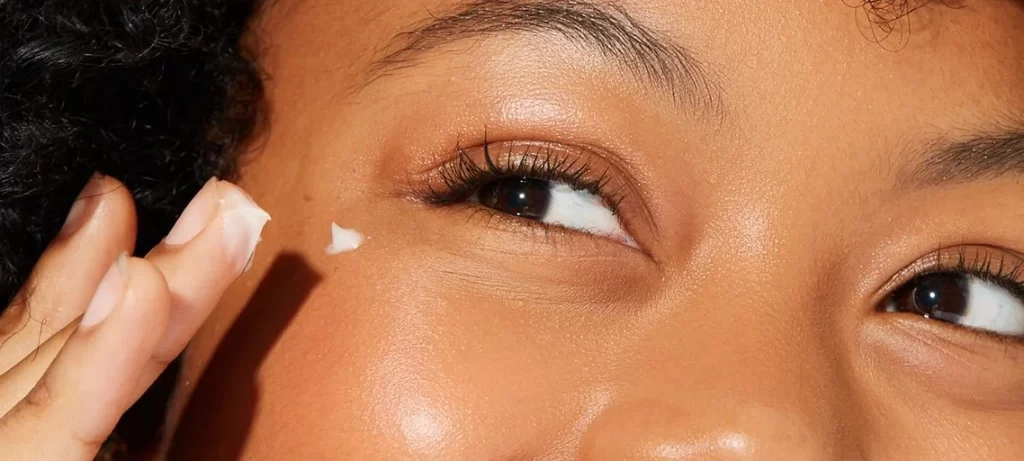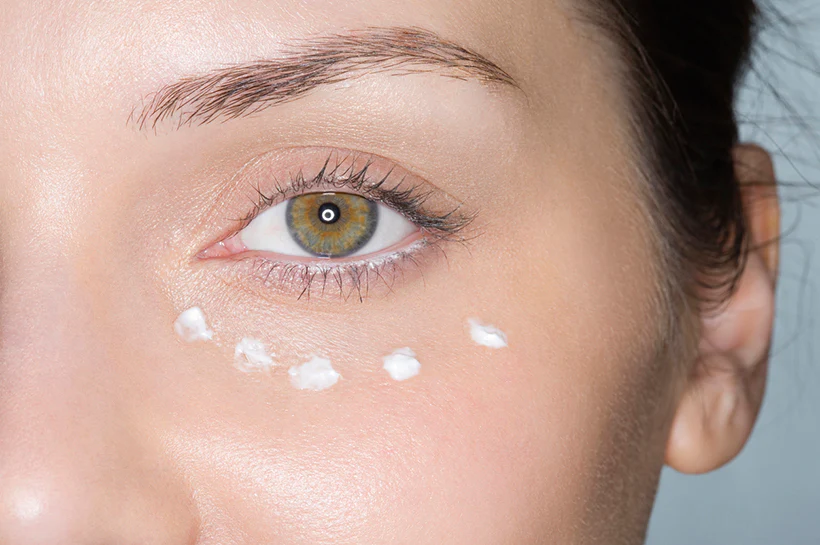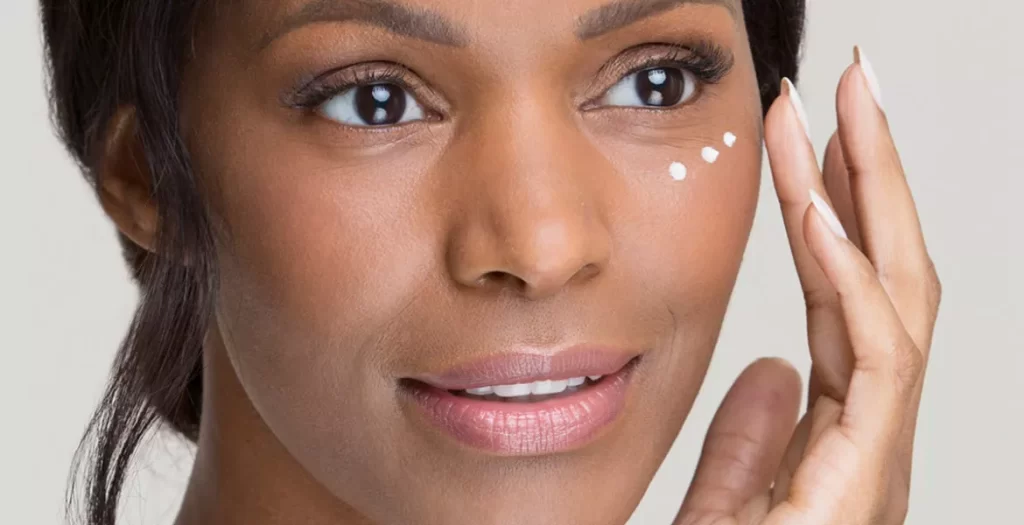
Why Can’t You Put Eye Cream on Eyelids
Why Can’t You Put Eye Cream on Eyelids?
The skin around the eyes proves extremely delicate and sensitive. Why can’t you put eye cream on eyelids?The eyelid area contains the body’s thinnest skin. This fragile tissue lacks protective properties found elsewhere on the face. Potent ingredients in most eye creams can irritate this vulnerable zone. Using the wrong products risks redness, puffiness, and potential damage.
Creams Formulated for Safety
Quality eye creams utilize carefully selected ingredient blends. Manufacturers formulate them without harsh chemicals or fragrances. They meticulously test for gentleness on the tender eyelid area. However, even these doctor-approved formulas require proper usage precautions.
Bypassing Key Barriers
Eyelid skin facilitates critical protective functions for the eyes. It shields delicate internal structures from potential irritants and injuries. The eyelids also regulate moisture levels via glands and ducts. Applying creams directly transfers ingredients past these natural safeguards.
Potential Ocular Hazards
Many popular eye cream ingredients carry risks when used incorrectly. Retinoids like retinol can cause excessive dryness, peeling or sun sensitivity. Vitamin C serums and hydroxy acids may sting and inflame areas near tear ducts. Peptides, stem cells and botanicals potentially trigger allergic reactions.
Tear Film Disruption
The eye’s tear film comprises a vital lubrication system. This tri-layered structure contains proteins, oils, electrolytes and water. Creams migrating onto lids and lashes disturb this balance. They disrupt tear flow patterns, inducing irritation or blurred vision. Styes, dry eye, and other conditions may develop.
Absorption Complications
Products designed for surrounding orbital areas utilize strategic thickeners and polymers. These size-enhancing agents control absorption rates into mature skin. However, the eyelids lack these denser protective layers. Active ingredients penetrate deeper, entering sensitive mucous membranes instead.
Rubbing Risks Abrasion
Working creams directly onto eyelids encourages rubbing and tugging motions. This friction increases potential abrasions or injury. Excessive pressure or pulling stretches fragile tissues beyond capacities. Wounds, wrinkles, lid drooping or discoloration may manifest over time.
Masking Underlying Issues
The tricky part involves navigating morning eye puffiness or discoloration. These symptoms actually signal underlying problems beyond surface solutions. Slathering creams across lids temporarily masks but never resolves root causes. Ignoring these signs allows conditions like cysts or infections to persist.
Dissolving Eye Makeup
Many eye creams contain emulsifiers, silicones and other ingredients. These components actually start dissolving and breaking down eye makeup upon contact. Mascara smears and dark flakes transfer across lids and under eyes. This messy outcome defeats the entire makeup application process.
Compromised Absorption
Existing eye makeup proves difficult to remove entirely prior to cream application. Any residual primer, concealer or powder creates a barrier shield across lids. This blocks active ingredients from properly absorbing into skin tissues. The desired benefits diminish dramatically.
Milia Seed Formation
Introducing oily agents like thickening waxes to eyelid pores clogs drainage pathways. Hardened oil deposits collect within obstructed follicles and oil ducts. This manifests as tiny white or yellowish milia bumps across eyelids. These unsightly “seeds” require dermatological extraction removal.
Lid Hygiene Risks
Most dermatologists warn applying any creams near eyelid rims invites bacterial contamination. Foreign substances transfer easily onto lashes and mucous membranes. From there, microbes gain easy access inside the eyes. Pink eye, styes or corneal ulcers may develop from poor product hygiene.
Exacerbating Dark Circles
Counterintuitively, massaging creams into under-eye hollows often worsens shadowy circles longer-term. Frequent motions and pressure enhance redness and inflammation over time. This exacerbates blood vessel pooling and discoloration beneath thin skin. Gentle dabbing techniques minimize this side effect.

Ingredient Potency Considerations
When it comes to eyelid applications, even all-natural plant butters and essential oils carry risks. Their highly-concentrated botanical compounds may trigger unexpected sensitivities. Diluting potent ingredients prevents irritation in this tender area. Otherwise, inflammation and burning develop.
Lid Integrity Concerns
Not just ingredients – the actual product textures raise eyelid concerns as well. Silky, thicker eye cream consistencies potentially weigh on delicate tissues when used incorrectly. Over time this consistent pressure contributes to sagging or hooding. Lighter gel-based formulas minimize this impact.
Rim Proximity Hazards
Many dermatologists caution against using any eye area product along upper or lower lid rims. Intimate contact near tear duct openings increases irritation potential. Ingredients may transfer across protective mucous lining compromising eye comfort and health.
Under-Eye Priorities
Instead, top eye creams concentrate on treating crepey textural issues around orbital bone areas. Their emollients and peptides soften stubborn crow’s feet and hollow lines. However, these formulas stop short of actual lid surfaces for safety reasons. Different chemistry balances apply there.
Tested Techniques for Lids
Makeup artists recommend gently dabbing specially formulated lid primers along lash lines instead. These silky balms nourish delicate lid areas without migrating or creasing makeup. When paired with smoothing lid lacquers, they perfect smooth canvas for shadow application.

In Closing
While eye creams deliver essential nourishing and firming solutions, their intended targets exclude eyelid regions. Explore alternative formulas like gentle creams, balms and primers specifically balanced for this delicate real estate. Restoring youthful definition requires precisely calibrated chemistry and application care!
In conclusion, it is not recommended to put eye cream directly on the eyelids due to several reasons. The delicate skin on the eyelids is particularly sensitive and prone to adverse reactions. Eye creams often contain active ingredients that may be too harsh for the thin and sensitive skin on the eyelids. Applying eye cream too close to the eyes can lead to irritation, redness, puffiness, and discomfort. The risk of getting the product into the eyes is also higher when applied directly on the eyelids, which may cause stinging, blurry vision, or other temporary eye-related issues.
Additionally, the skin on the eyelids is different from the skin around the eyes. It is thinner and more prone to absorbing the product, potentially leading to unwanted side effects. It is important to follow the instructions provided by the eye cream manufacturer and apply the product only on the orbital bone, avoiding direct contact with the eyelids. By being cautious and mindful of how we apply eye cream, we can protect and care for the delicate skin around our eyes effectively.



